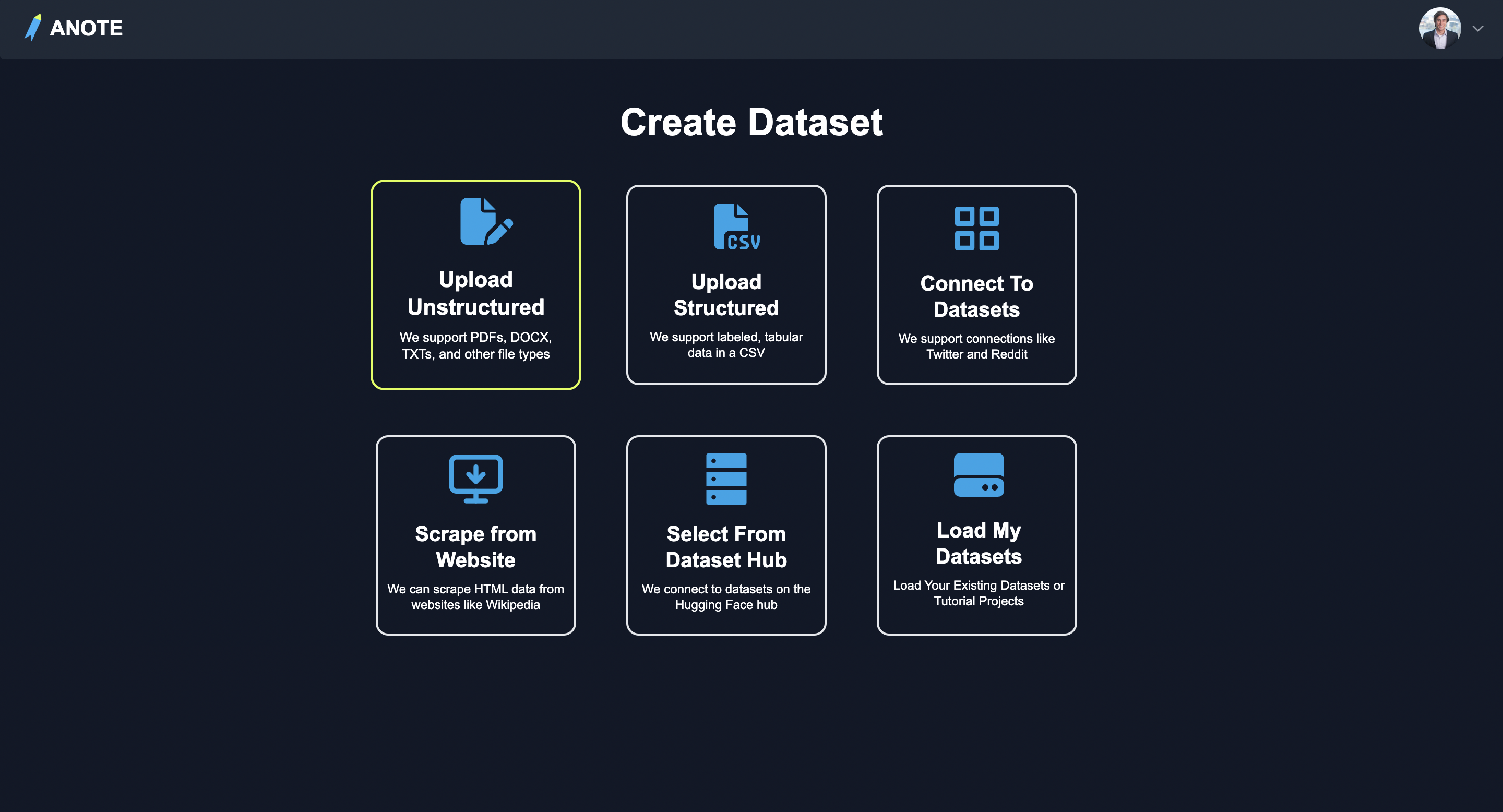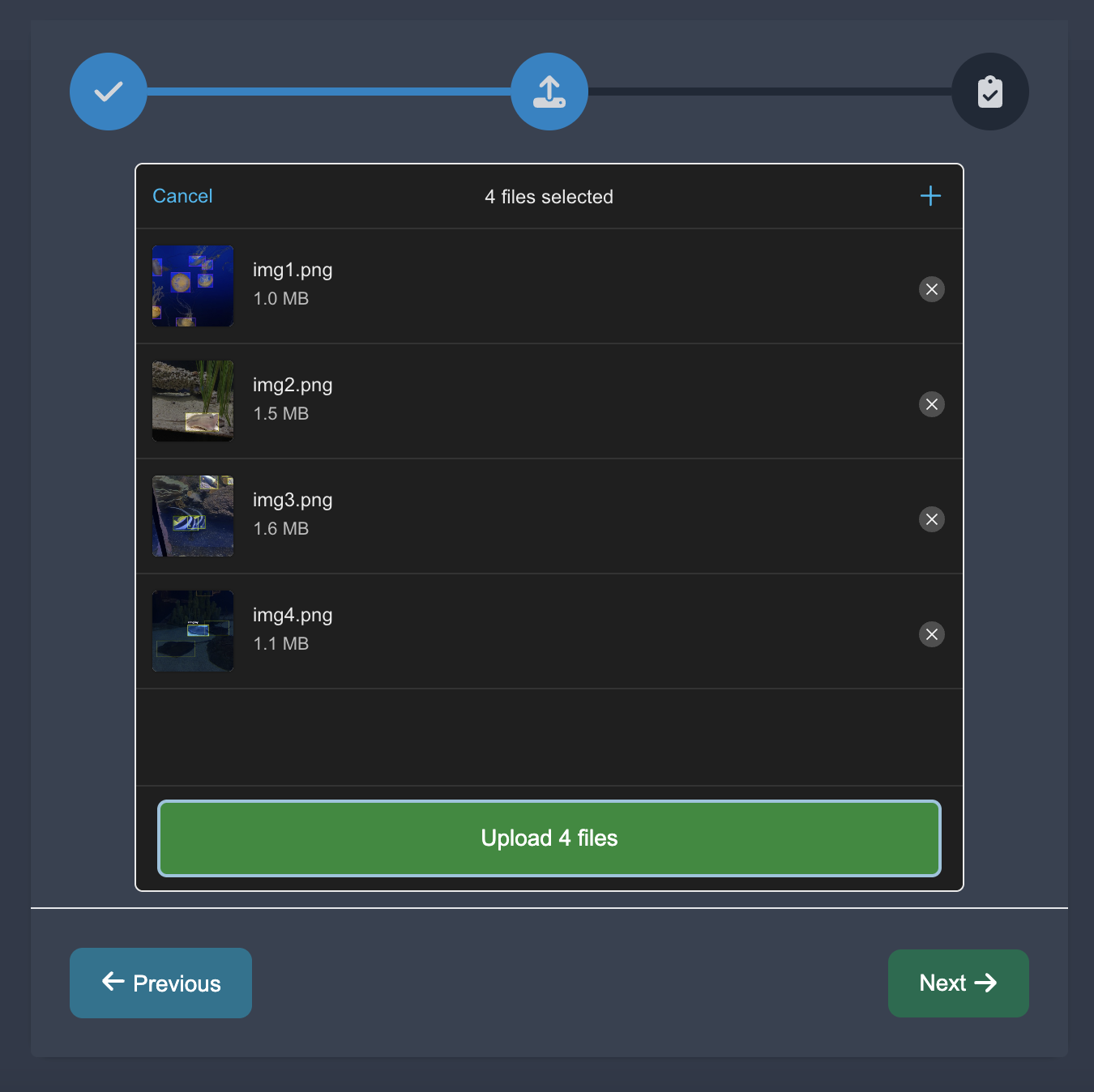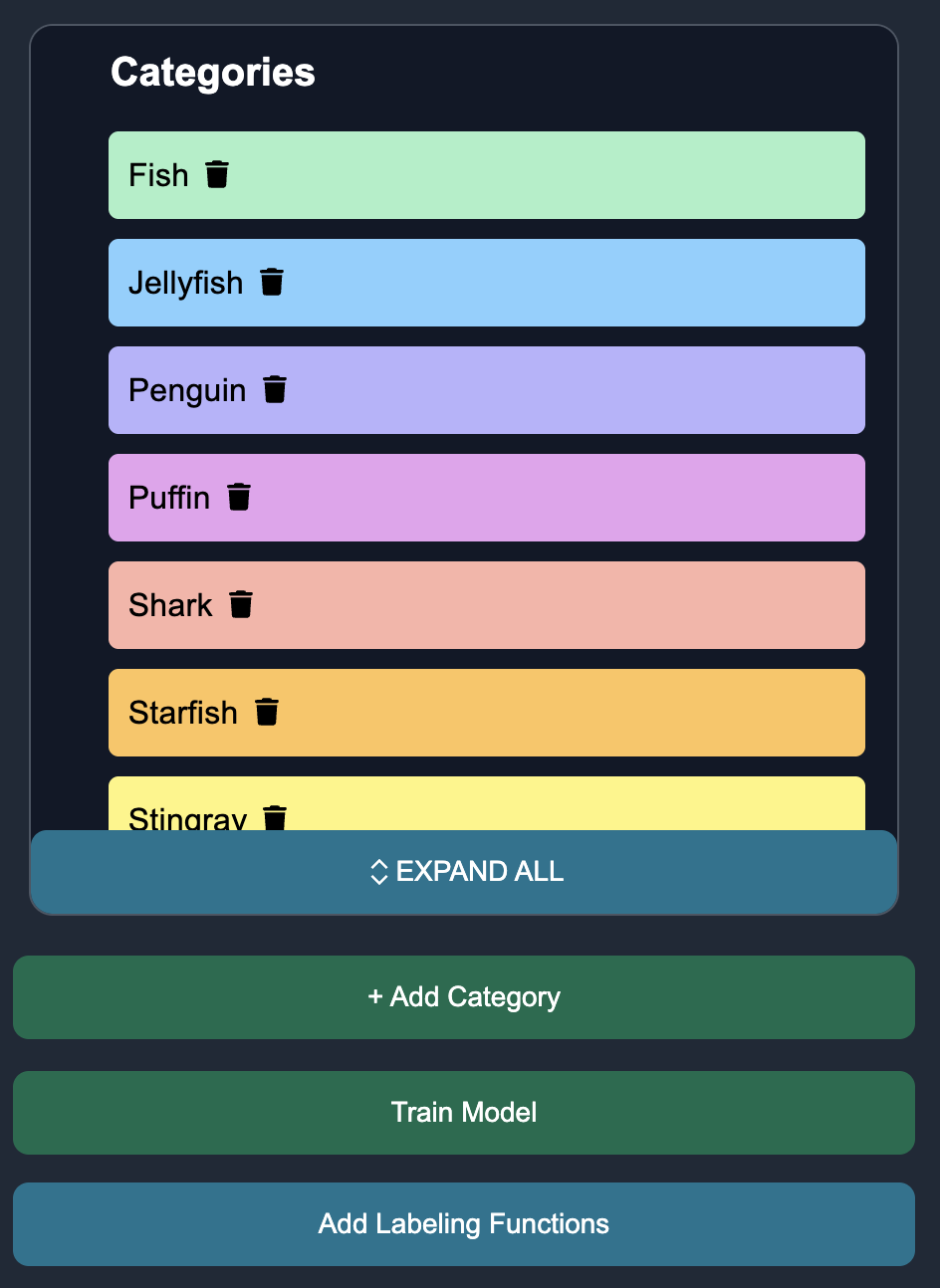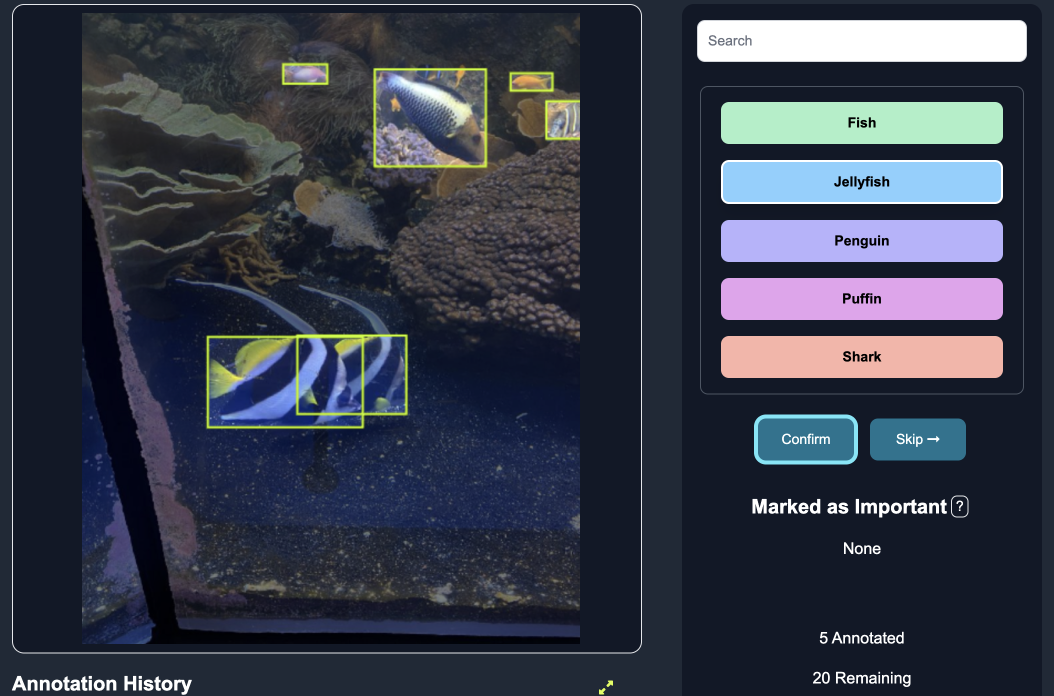Product Demo
Upload

To upload an unstructured dataset, you can utilize our system's support for various file formats. We accept JPGs, PNGs, PDFs, DOCX, PPTX, and many other file types. This allows you to easily upload diverse types of unstructured data for processing.


Customize

Once you have uploaded your dataset, the next step is customizing. At this stage, ontologists and subject matter experts can contribute their intrinsic expertise by:
Choosing their classes
Add, modify, or delete classes to align with your specific use case.

Adding programmatic labeling functions
Incorporate programmatic labeling functions that automate the labeling process based on specific rules or patterns, tailored to your use case.
Annotate

After creating initial programmatic labeling functions, the next step is to begin annotating. We designed our annotation interface to be as seamless, easy to use and enjoyable as possible, almost like a quizlet for data labeling. The GUI is flexible, able to be modified based upon dataset, document type and task. Here, the data labeler sees a row of text data and the corresponding class prediction. The rows shown to the data labeler are sorted by uncertainty (lowest probability) or volatility (biggest impact) that way the data labeler is annotating points that will make the biggest difference to the model. The data labeler can:
-
choose the category of the specific label
-
mark keywords or bounding boxes that influenced the labeling decision
-
skip the row of data if they are unsure about the data label
Annotate for Classification
The Anote platform offers a user-friendly interface for efficient annotation of data for classification tasks. To highlight or mark important features or move bounding boxes, simply interact with the data and utilize the provided tools. By clicking on the corresponding label in the sidebar, users can easily assign the appropriate classification. Once the annotation is complete, a simple click on the "confirm" button allows for seamless transition to the next annotation, optimizing the annotation workflow.


When you are satisfied with your data labels, you can view specific model metrics as well as download as CSV of your high quality, labeled training dataset.
Download
For classification, the download spreadsheet includes the specified columns in the YOLO format. On press of the download button, Anote and converts the table into a CSV file.
On the labeling dataset, this will look like the following table and images, where one box could be the actual (ground truth) labels, and the other box could be the model predictions:
| Image Name | Actual Category Label | Actual x center | Actual y center | Actual width | Actual height | Predicted Category Label | Predicted Probability Score | Predicted x center | Predicted y center | Predicted width | Predicted height |
|---|---|---|---|---|---|---|---|---|---|---|---|
| img10.jpg | Shark | 2100 | 1450 | 3500 | 2500 | Shark | 0.97 | 2050 | 1450 | 3000 | 2800 |
| img4.jpg | Jellyfish | 575 | 400 | 1100 | 500 | Jellyfish | 0.96 | 540 | 370 | 850 | 500 |
Multiple Labels per Image
When multiple labels exist for a single image, they are stored in multiple rows of a single table. Each row corresponds to one image category identified, allowing comprehensive coverage for images containing several objects.
| Image Name | Actual Category Label | Actual x center | Actual y center | Actual width | Actual height | Predicted Category Label | Predicted Probability Score | Predicted x center | Predicted y center | Predicted width | Predicted height |
|---|---|---|---|---|---|---|---|---|---|---|---|
| img3.jpg | Shark Jellyfish Fish |
100 300 450 |
120 320 480 |
80 150 60 |
60 100 90 |
Shark Jellyfish Fish |
0.93 0.87 0.91 |
102 295 452 |
118 325 475 |
82 148 58 |
62 98 88 |
Anote allows for synchronous downloading of the results, providing you with real-time access to the labeled data. As soon as the annotation process is started, you can obtain the results without delay, adjusting in real time to the annotations made.
Integrate via API
You can take the model trained on the data, and export it via API to make improved object detection predictions for undersea imaging. As you curate and label more data, the models performance will be improved. You can use the developer kit to integrate the model into the end-autonomous system, as an more accurate and improved, domain specific real time object detection algorithm.